Rallying With Retreaded Tyres
- By Gaurav Nandi
- March 03, 2025
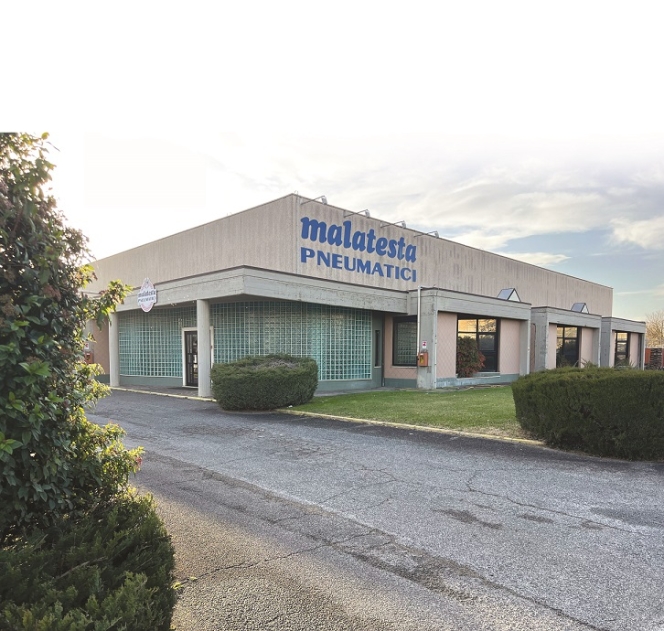
Retreaded tyres have evolved to meet modern demands, blending cost-efficiency with environmental responsibility. Since tyres’ operational costs are the second highest expense after fuel consumption, retreading provides a smart solution for transporters and fleet owners. Today, its reach extends beyond commercial vehicles to motorsports, exemplified by Malatesta Tyres’ triumph in the Italian Rallycross Championship. This milestone highlights the potential of retreaded tyres in high-performance scenarios, redefining perceptions and showcasing its critical role in the circular economy.
The use of retreaded tyres has penetrated different geographies over the centuries. Origins of companies involved in the trade even dates back to the 1950s just after the end of World War II. Moreover, as tyres take the second spot for the most expensive ware in a vehicle after fuel, retreading has been a boon in disguise for transporters and fleet owners. Adding to the virtues of this old trade is its quality of ‘reuse’ that boots the quotient on sustainability. However, as the world grows more and more accustomed and informed of retreading, especially with developing countries welcoming it with arms open, the trade is taking a step into the future. While most people are aware that tyre retreading mostly happens on commercial vehicles, has anyone heard that the world of motorsports is also subjected to such wares? Probably not!
HERE’S AN EYE OPENER!
Italian family-owned Malatesta Tyres forayed into the motorsports category in 2023 when Brazilian-born driver Lucas Scabbia took on the Italian Rallycross Championship in the STC Plus 2000 Class. The racer donned Malatesta’s retreading tyres on his Peugeot 207 1.6 RS and eventually went on to be crowned the Italian Champion after the season in the category.
While the feat clearly resembles the power of tyre retreading and bears the mark of quality as motorsports require very heavy-duty tyres, it also quells the myths associated with retreading and its potential applications within different tyres categories.
RALLY TYRES
Following the marvellous job, a peek into the world of Malatesta Tyres revealed the nuances to making retreaded tyres for the motorsport events and the company’s plans to further explore the rugged terrains with its tyres.
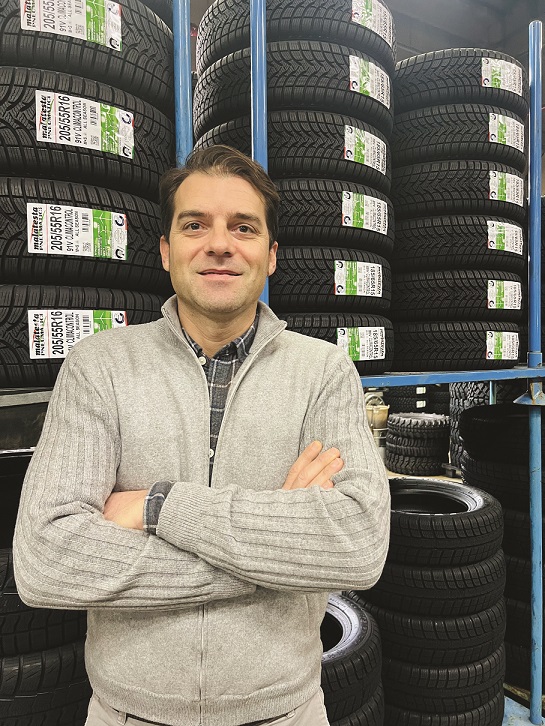 Speaking exclusively to Tyre Trends on the quality benchmarks adopted to make retreaded tyres for the motorsport event, Sales Manager Matteo Malatesta revealed, “We relied on high-quality casings, using only premium brands for the Rally Cross event, specifically. Additionally, we reinforced the casings designated for racing tyres, particularly the sidewalls, to make them stronger and provide faster responses on track curves. We utilised eight different compounds, ranging from super soft to hard, to ensure versatility. Each tyre underwent shearographic testing to confirm there are no separations.”
Speaking exclusively to Tyre Trends on the quality benchmarks adopted to make retreaded tyres for the motorsport event, Sales Manager Matteo Malatesta revealed, “We relied on high-quality casings, using only premium brands for the Rally Cross event, specifically. Additionally, we reinforced the casings designated for racing tyres, particularly the sidewalls, to make them stronger and provide faster responses on track curves. We utilised eight different compounds, ranging from super soft to hard, to ensure versatility. Each tyre underwent shearographic testing to confirm there are no separations.”
He added, “We don’t supply retreaded tyres for the Rally Cross World Cup, but they are used in other events not only in Italy but also in countries like those participating in the Baltic Rally Cross. The World Cup primarily uses monobranded new tyres from manufacturers that sponsor the events heavily as they invest significant amounts to ensure their tyres are exclusively used. Our approach is different; we don’t invest as heavily in sponsorships. Nonetheless, these retreaded tyres are cost-effective, saving users significant amounts of money.”
Alluding to how the company handled skepticism about durability and reliability, he noted, “The primary difference between our racing retreaded tyres and new racing tyres lies in the casing. New racing tyres are built with casings specifically designed for racing, making them inherently stronger. However, we compensate for this by reinforcing our retreaded tyres, particularly on the sidewalls, to ensure they perform like a racing casing. A hard sidewall is crucial in motorsport as it provides quicker responses during turns. If the sidewall is too soft, the car’s turning response is slower. By making the sidewalls harder, we achieve a faster and more precise response.”
“Regarding the compounds, the difference between our compounds and those used in new tyres is minimal. We design our compounds from scratch using proprietary recipes, which results in performance being very similar to that of new tyres, ensuring reliability and durability in high-demand racing scenarios,” he added.
When asked about plans to launch the tyres in other motorsports categories or events, he expressed an interest in expanding but clarified that, at present, the focus is primarily on Rally Cross. He acknowledged that other racing categories could potentially be interesting but noted a challenge that involved many motorsport participants willing to pay premium prices for new tyres and might not consider retreaded options. However, he also pointed out that there are racers who need to conduct extensive training and testing, and for them, retreaded tyres could be a viable and cost-effective option.
The company also collaborated with an Italian race car design and driver training institute called Labs Automotive for putting the tyres on track. Regarding the collaboration, he explained, “This collaboration extends to Labs Automotive’s school, where they teach driving skills and use our tyres for training as well as for regular racing events.”
PRESENT DAY
Matteo explained that he represents the third generation of a family business that originated in 1946 in Rome, founded by his grandfather, Alberto Malatesta. After returning to Italy from Africa following the Second World War, Alberto started working in a tyre shop, where he learned the craft of retreading tyres. From modest beginnings, he gradually expanded the business with the help of his three sons. Currently, Matteo’s uncle is the Chief Executive Officer of the company.
The first industrial-scale factory was built in 1970s and by 1990s. The company had established a larger and more advanced facility in Anagni, 50 kilometres south of Rome, which houses the current headquarters too and produces a wider range of retreaded and refurbished tyres.
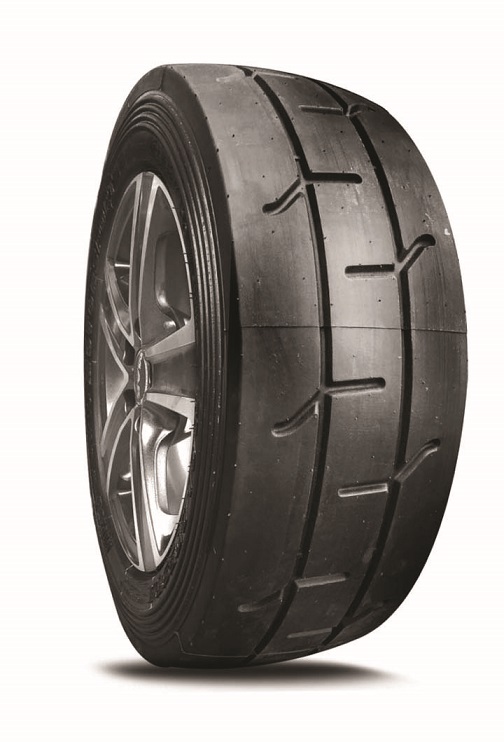 Besides racing tyres, the company also processes offroad tyres, car tyres for summer and winter, solid tyres etc. Since the 2000s, the company began producing racing and solid tyres while maintaining a focus on retreading truck tyres using casings sourced from customers and its own inventory. A fleet of five trucks collect used casings from clients within a 300 to 400 kilometre radius around Rome, which are retreaded and returned within a week.
Besides racing tyres, the company also processes offroad tyres, car tyres for summer and winter, solid tyres etc. Since the 2000s, the company began producing racing and solid tyres while maintaining a focus on retreading truck tyres using casings sourced from customers and its own inventory. A fleet of five trucks collect used casings from clients within a 300 to 400 kilometre radius around Rome, which are retreaded and returned within a week.
Matteo also emphasised that the company continues to invest in advanced machinery and technologies to ensure Matteo Malatesta high-quality retreaded tyres. It develops specialised compounds in its own lab and retreads approximately 200,000 tyres annually, catering to both B2B and B2C markets and exporting to 20 countries.
He also highlighted that the family business employs around 40 people, with the management remaining under the Malatesta family. Alongside the main operations, the company also produces bladders and envelopes for retreading facilities and new tyres through their subsidiary, MAE Industria Gomma. They also operate a tyre shop by the factory that sells both self-made products and new tyres from multiple brands, and this shop recently became a member of Michelin’s Euromaster network.
In terms of revenue, Matteo noted that truck tyres account for around 25–30 percent, while off-the-road and passenger car tyres make up approximately 40 percent. Race tyres contribute about 10 percent, as do solid tyres, with the remaining 10 percent comprising other types of tyres.
LOCAL INDUSTRY
Despite the challenges posed by competition from low-cost Asian manufacturers, particularly from countries like China, Thailand and Vietnam, the company has remained committed to retreading. Matteo noted that while retreaded tyres are environmentally beneficial, the price gap between new budget tyres and retreaded options often sways customers towards the former, limiting demand for retreads.
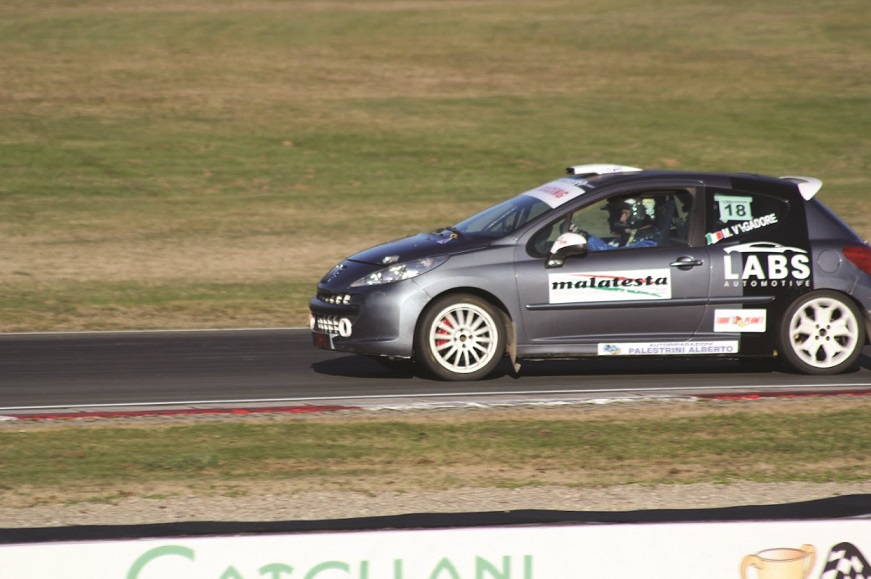
Despite the growing challenges and closures of many retreading factories over the years, the company remains dedicated to this segment, believing in its environmental and performance advantages.
Commenting on whether retreading is a dying industry in Italy, he noted, “Retreading is not a dying industry, but it’s not thriving either. It’s stable but slightly declining, which is concerning given the growing emphasis on environmental sustainability. While recycling plastics and paper has become mandatory, there’s no similar push for retreading tyres, even though retreaded tyres can perform as well as or better than budget tyres. It’s baffling that such a viable recycling method isn’t more supported or incentivised.”
“Our factory is currently operating at 30–40 percent of its capacity, meaning we could double our production if needed. However, finding enough quality casings is a challenge. In Europe, the system is inconsistent. For example, when purchasing new tyres, consumers pay a tax for tyre disposal. In countries like Spain and England, this has led to mandatory recycling policies where a portion of casings must be reused, making it easier to source materials for retreading. In contrast, Italy has regulations that hinder the reuse of casings. This makes it difficult to find casings suitable for retreading,” he added.
The company has invested in advanced technologies to improve the longevity and performance of retreaded tyres. It uses a shearographic machine to inspect casings before and after retreading and electrical detection systems to identify micro-holes. Additionally, laser-equipped machinery ensures precise casing measurements, while high-quality rubber and proprietary recipes are used for compound testing. The company also invests in rebalancing technologies ensuring superior performance and reliability.
He emphasised the need for greater efforts by European states and unions to inform the public and potentially legislate the mandatory use of retreaded tyres to support the industry.
FUTURE COURSE
Matteo mentioned that the company exports to 20 countries and its largest export markets are in Northern Europe, particularly Scandinavia and the Baltic countries. These regions are accustomed to using retreaded tyres and have a strong culture of recycling, making them ideal markets for the company’s products.
He also expressed a strong desire to expand the use of retreaded racing tyres into other types of motorsports. Furthermore, he highlighted that the company is supplying retreaded tyres to the Rome Fiumicino Airport. This collaboration began approximately two years ago after the airport, which had been exploring greener initiatives, reached out to the company. The airport representatives visited the company’s facility, became convinced of the quality and viability of retreaded tyres and started using them for its fleet of smaller cars.
Nonetheless, the executive stated that while this partnership marked progress, there is still a significant opportunity to expand retreaded tyre use at the airport. For example, many buses transporting passengers to planes still rely on low-cost Asian tyres rather than retreads. He expressed a desire to see a broader adoption of retreaded tyres in this sector and plans to continue advocating for their use at the airport.
Retreaded tyres exemplify the perfect balance of cost-effectiveness, performance and sustainability. By reusing casings and employing advanced technologies, it offers a reliable alternative to new tyres across diverse applications – from commercial vehicles to motorsports. Companies like Malatesta Tyres have demonstrated the durability and versatility of retreaded tyres, debunking myths about reliability. As environmental awareness grows, retreading emerges as a vital contributor to the circular economy, making it a crucial choice for eco-conscious industries and individuals alike.
Trelleborg Tires Retains Crown As Brazil's Best Agriculture Tyre
- By TT News
- December 07, 2025
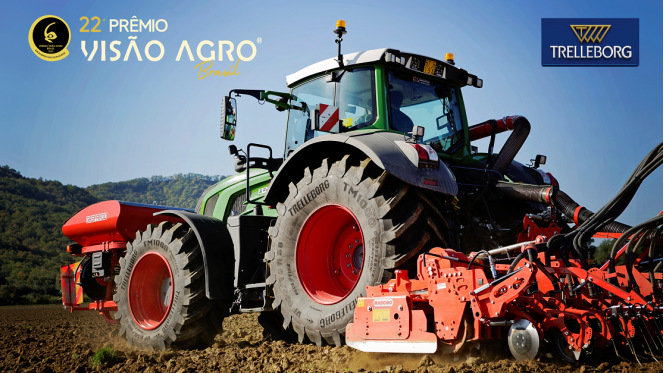
For the second consecutive year, Trelleborg Tires has earned the prestigious title of Best Agriculture Tyre at the 22nd Visão Agro Brazil Awards. This 2025 accolade, presented during a ceremony in Ribeirão Preto, highlights the company’s dedicated role in advancing Brazilian agribusiness through technological leadership and a commitment to sustainable practices. The award was received on behalf of the company by Fábio Metidieri, Agri Sales Director for Yokohama TWS Brasil.
Central to this achievement is Trelleborg’s ongoing innovation, particularly the expansion of its ProgressiveTraction technology within the TM tyre series. This engineering, featured in models from the row-crop TM600 to the high-horsepower TM1000, utilises a dual-edge lug design. The tread operates progressively on the soil to enhance traction, promote self-cleaning and minimise vibration. The resulting benefits include improved operational efficiency, increased tyre durability and superior soil protection, directly supporting farmers’ goals for greater productivity and environmental stewardship.
The company’s deep roots in Brazil, supported by a specialised local team, rigorous field testing and strong manufacturer partnerships, ensure its solutions are finely tuned to regional demands. This local infrastructure allows for responsive technical service and keeps product development closely connected to the practical challenges faced by the agricultural sector. The Visão Agro Brazil Awards, judged by a panel of industry executives and researchers, serve as a recognised benchmark for innovation and performance, making this recognition a significant testament to Trelleborg Tires’ impact on the country’s farming landscape.
Metidieri said, “Receiving this award at such a prestigious event once again reinforces our commitment to Brazilian agriculture. Our goal is to keep advancing in technology and field performance, ensuring that every Trelleborg tyre delivers real value – helping farmers operate more efficiently, sustainably and profitably. This award reflects the trust placed in our team and our products by professionals throughout the sector. It strengthens our commitment to delivering technologies that address local challenges and help shape the future of Brazilian farming.”
Premium Makeover
- By Sharad Matade
- December 05, 2025
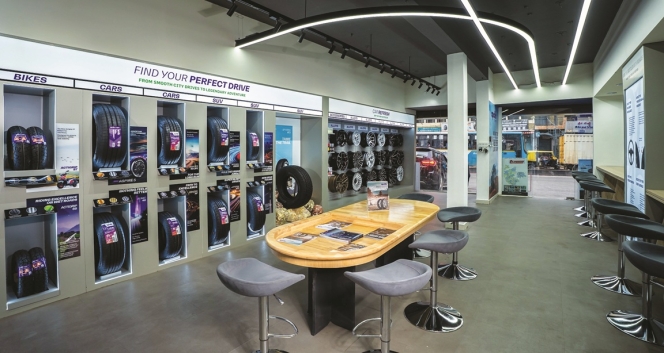
India’s tyre retail industry is undergoing a dramatic makeover, moving far beyond the cluttered workshops and transactional buying of the past. Fuelled by rising demand for premium vehicles, digital-first customers and stronger export momentum, tyre makers are transforming retail spaces into sleek, immersive experience centres. What was once a routine utility purchase is rapidly evolving into a premium, advisory-led mobility experience designed for a new generation of motorists.
India’s tyre retail scene is shifting gears, leaving behind the era of crowded workshops and impersonal counters. In their place, manufacturers are rolling out sleek, thoughtfully designed, tech-powered spaces that echo the luxury of high-end car showrooms. What started as a few bold pilots in big cities has quickly become the go-to playbook for tyre brands eager to win over a new generation of savvy, comfort-loving, digital-first customers.
From urban to rural areas, this transformation reveals a profound change in how Indians approach mobility. Today’s motorists – especially those behind the wheel of SUVs, luxury sedans and electric cars – want more than just a tyre swap. They crave expert advice, a polished atmosphere and a shopping experience that reflects the elegance of their vehicles. Once a utilitarian afterthought, tyre retail is now emerging as a coveted part of the automotive journey.
Strong OEMs and replacement demand in both domestic and export markets underpin the transition.
In FY 24-25, tyre exports from India surged by nine percent year-on-year to INR 251 billion, according to data released by the Ministry of Commerce. With an estimated annual turnover of INR 1 trillion and exports exceeding INR 250 billion, the Indian tyre industry stands out as one of the few manufacturing sectors in the country with a high export-to-turnover ratio.
Though tyre exports have hit a speed bump due to higher US tariffs on select categories of Indian tyres compared to those of competing nations, the long-term prospects for the Indian tyre industry remain strong. According to a joint report by ATMA and PwC India titled ‘Viksit Bharat 2047: Vision and Roadmap for the Indian Tyre Industry’, India’s tyre production volumes are projected to grow nearly fourfold by 2047, while industry revenues are expected to expand almost 12 times to about INR 13 trillion.
Against this backdrop, tyre makers are modernising aggressively to retain customers and build a more profound emotional affinity. The broad shift is visible in how retailers are reinventing their spaces. Lounges with crafted lighting, upholstered seating, minimalist décor and large digital walls are replacing traditional steel racks and dusty counters. Informational murals and heritage display trace decades of tyre innovation, strengthening brand storytelling. Stores increasingly feature curated experience zones where customers can explore tyre technologies, EV-compatible profiles, eco-friendly materials and performance characteristics through visual displays and interactive tools.
A clear sign of this trend is the rise of personalised, advisory-led engagement, replacing the old dependence on technicians. Retailers now profile driving habits, terrain usage, daily distance and vehicle type to recommend tyres customised to each consumer’s pattern. This service-led model is shifting the customer’s mindset from price-first decision-making to long-term value evaluation.
The new premium outlets are designed to deliver a lifestyle-driven, hospitality-grade experience rather than a traditional tyre shop visit. Customers receive personalised mobility recommendations tailored to their vehicle, driving style and needs, supported by smart service innovations like intelligent product selection, quick-fit services and digital scheduling. The space also acts as a community hub for driving enthusiasts, creating a connected ecosystem around the brand. With lounge-style comfort, immersive storytelling and specialised tyre and service packages for luxury and performance vehicles, the outlet blends convenience, premium care and brand-centric offerings into an elevated customer experience.
“Customer experience at the point of sale is another branding exercise poised to change buyer characteristics. Multi-brand outlets often commoditise the tyre-buying experience. That’s why companies are launching exclusive brand outlets with curated customer experiences. Over the next decade, new delivery models will emerge,” said Kavan Mukhtyar, Partner and Leader – Automotive, PwC India.
Apollo Tyres articulates this change as a move towards lifestyle-led retailing. Its new super-premium outlets have been built not as showrooms but as emotionally resonant spaces.
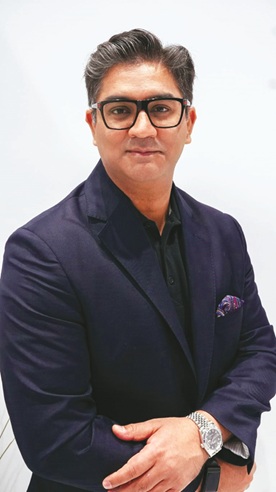
Udyan Ghai, Group Head of Marketing at Apollo Tyres, explained that the company’s new retail architecture is anchored in long-term strategic priorities: “Our move to a lifestyle-led, immersive tyre retail format is driven by our own desire for premiumisation and category leadership. We are looking at elevating tyre retail in India by setting new benchmarks and shifting from commodity selling to a premium, lifestyle-driven experience.”
He said the brand aims to ‘emotionally engage with customers, offer tailored solutions, build a community of driving enthusiasts and tap into premium segments – all while delivering a differentiated, modern retail experience’.
Ghai believes retail ambience plays a decisive role in influencing perception. “A relaxed and well-designed lounge signals comfort, trust and premium value,” he said, adding that such environments elevate tyres from a mundane requirement to a core element of vehicle care and identity.
Digital transparency, he believes, is the second pillar of modern tyre retail. “Digital systems ensure transparency and help demystify tyre selection – tread patterns, speed ratings, durability and fitment. Consumers feel less dependent on a technician’s word and more in control, which boosts their confidence and perceived fairness,” Ghai said.
Customers today are inundated with choices, and digital systems, he said, turn tyre buying into an ‘informed, personalised decision’, comparable to selecting a smartphone, a pair of performance shoes or even a detailed insurance plan. According to Ghai, this new retail model is ‘a strategic investment in the future of mobility retail’, designed to be scalable and to support community-building events, workshops and enthusiast interactions. As India moves towards EVs and connected cars, he said these premium outlets will provide EV-focused tyre expertise, interactive digital tools and personalised recommendations that appeal to younger, digitally savvy motorists.
CEAT shares a similar philosophy. Its national retail revamp focuses heavily on digital immersion, consistent messaging and design-led layouts. Lakshminarayanan B, the company’s Chief Marketing Officer, said the modernised CEAT Shoppes are fundamentally reshaping the category.
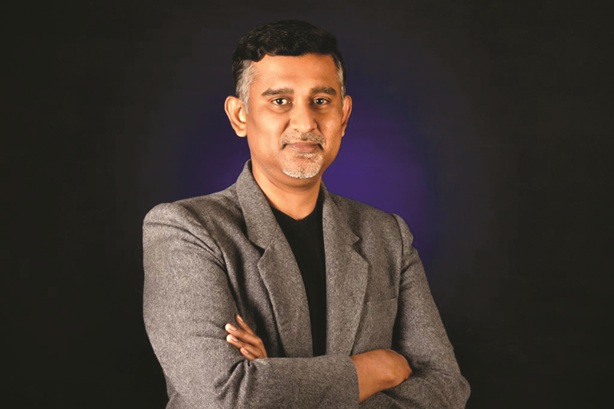
“The modern layouts and digital integration in CEAT Shoppes are revolutionising the tyre-buying experience, making it more experiential and customer-centric,” he said, adding that these updated outlets elevate the experience, build trust through uniform communication and drive decisions by reducing ambiguity around features and value.
Lakshminarayanan highlighted CEAT’s attempt to harmonise customer experience across demographics: “The approach in urban markets through premium stores, product offerings and services is to create access and aspiration for premium customers. The same is replicated in upcountry markets also.”
The CEAT Executive said the company is building for a future where personalisation will be the defining characteristic of tyre retail. “CEAT is focused to drive the future of tyre retail through end-to-end personalisation,” he said.
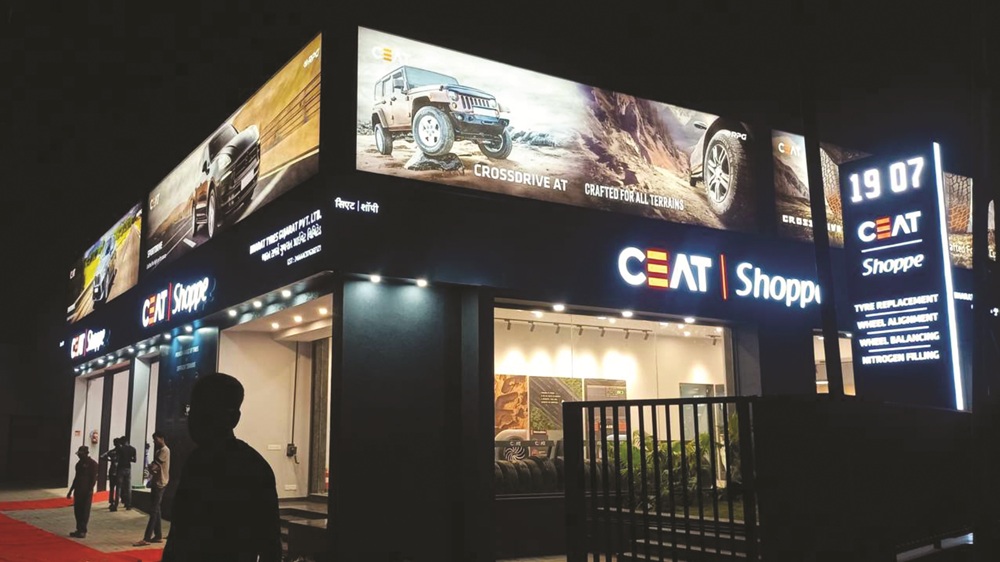
As experiential retail takes hold, service portfolios inside tyre stores are expanding faster than ever. Advanced wheel balancing, laser-driven alignment systems, nitrogen inflation, premium alloy wheel installations, EV-oriented tyre consultations, digital appointment scheduling and real-time tyre-health diagnostics are now standard. Many outlets also provide car detailing, interior cleaning, ceramic coating, PPF application, brake checks, battery inspections and multi-point vehicle health reports, making them full-fledged mobility centres.
Global players have pushed the envelope even further. Michelin’s 25,000-square-foot Experience Store in Nashik features a heritage wall and innovation displays showcasing electric mobility, materials science and environmental responsibility. It houses precision wheel-alignment bays, detailing studios, and accessory galleries. “We are proud to unveil Michelin’s first Experience Centre in India. The sole purpose of this store is to go beyond traditional tyre retail and provide customers with an immersive experience of the brand,” said Shantanu Deshpande, Managing Director of Michelin India.
Continental Tyres is also strengthening India’s premium retail ecosystem through its CPD outlets, which include ambient lounges, diagnostic equipment, premium alloy wheels and digitally enabled guidance. “With our new CPD store in Indore, we bring Continental’s promise of safety, innovation and comfort closer to Madhya Pradesh’s clients,” said Samir Gupta, Managing Director of Continental Tyres India. He added that the brand’s ‘In the Market, For the Market’ approach is central to its retail expansion strategy.
Even in rural markets, tyre retail is becoming more formalised, structured and service-oriented. JK Tyre’s ‘Steel Wheels’ format is targeted at towns with populations under 100,000 and offers standardised layouts, value-added services, best-in-market pricing and instant claim facilities. “Our Rural expansion programme will help us reach the interiors of the real Bharat that is economically vibrant but often underserved. We are not just building retail points; we are also enabling entrepreneurship and access,” said Managing Director Anshuman Singhania.
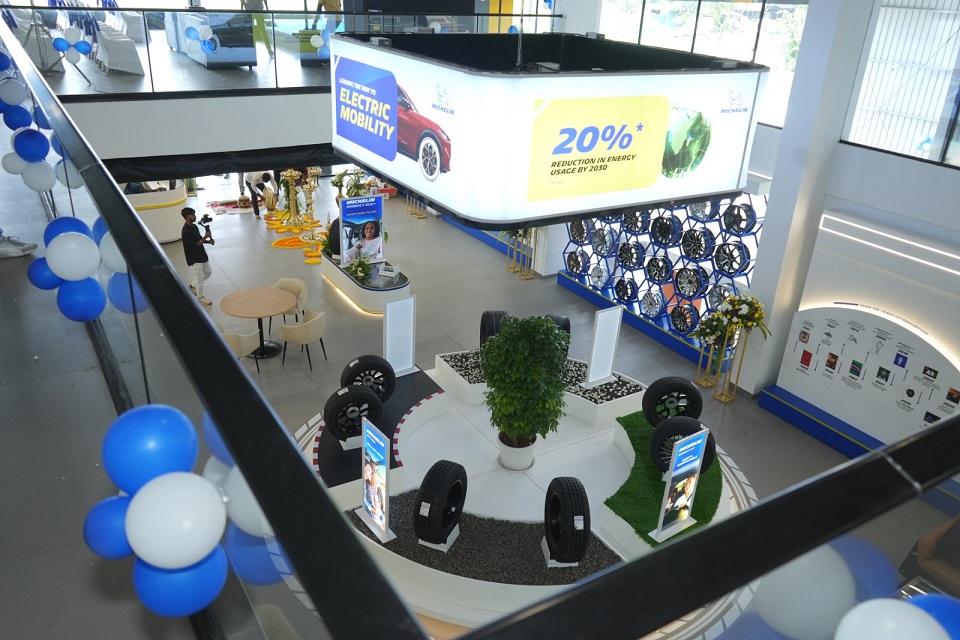 Together, these developments mark a decisive shift in how tyre brands engage customers. Tyre stores are increasingly functioning as lifestyle environments, designed for comfort, informed decision-making, personalisation, transparency and community. The industry is moving away from a product-first mindset to a customer-experience-led philosophy.
Together, these developments mark a decisive shift in how tyre brands engage customers. Tyre stores are increasingly functioning as lifestyle environments, designed for comfort, informed decision-making, personalisation, transparency and community. The industry is moving away from a product-first mindset to a customer-experience-led philosophy.
As premium cars, SUVs and EVs become mainstream, and as younger motorists prioritise digital empowerment and ambience, tyre retailers are aligning with these new expectations. India’s tyre makers are building a retail landscape where experiential engagement, technology integration, service breadth and emotional connection define long-term brand success.
For an industry long anchored in grease, metal and functionality, the transformation is profound. Tyre retail in India is no longer just about fitment; it is becoming a premium mobility experience, curated for a generation that demands clarity, comfort and an elevated relationship with every aspect of vehicle ownership.
Kumho Tire To Build First European Plant In Poland With $587mln Investment
- By TT News
- December 05, 2025
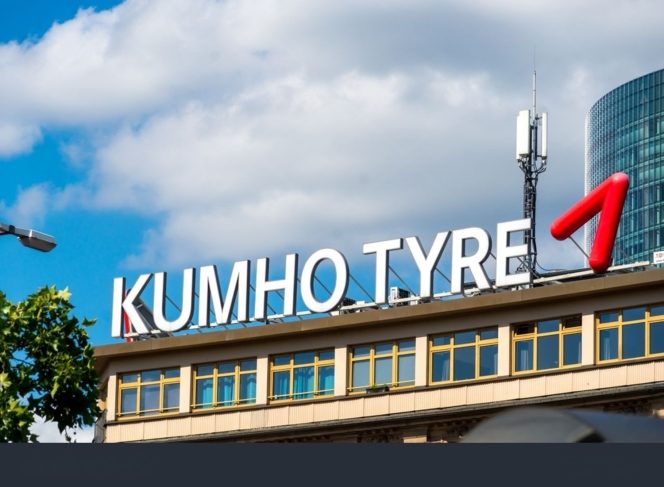
Kumho Tire will establish its first European manufacturing plant in Poland’s Opole region as the South Korean company seeks to expand its position in one of the world’s largest tyre markets.
The group said the factory is scheduled to begin initial operations in August 2028, subject to investment approval and licensing. Kumho plans to produce 6m units annually in the first phase and expand capacity in line with demand. Total planned investment is USD 587 million.
Kumho has spent recent years evaluating multiple European locations, including Poland, based on logistics, labour availability, infrastructure, market access and investment incentives. The company said Opole was selected as the optimal site owing to supply-chain stability within the EU and the region’s supportive operating conditions.
Europe accounts for about a quarter of global tyre consumption and is home to several major automotive manufacturers. The region represented roughly 26.6 per cent of Kumho’s sales last year. The company has previously relied on exports to serve European customers, which it said limited its competitiveness in the market.
The new plant is intended to strengthen Kumho’s ability to supply high-value-added products, including high-performance and larger-diameter tyres, to European vehicle makers.
Kumho currently operates eight production sites across South Korea, China, the US and Vietnam, with combined annual output of 65 millionunits. The Polish plant will complete what the company describes as a production network spanning Asia, Europe and North America.
Jung Il-taek, Kumho Tire’s Chief Executive, said: “The European market occupies a very important strategic position in the global tire industry,” adding that “Kumho Tire will go beyond simple exports and dramatically enhance premium brand value by strengthening quality and service competitiveness through local European production and supply.”
Tyre Stewardship Australia Appoints David Fraser As Chair As David Spear Steps Down
- By TT News
- December 04, 2025

Tyre Stewardship Australia has appointed David Fraser as its new chair, succeeding David Spear after nine years in the role during a period of regulatory and industry change in the country’s tyre-recycling sector.
Spear’s departure closes what the organisation described as a challenging yet incredibly important chapter for its efforts to advance circular outcomes for Australia’s end-of-life tyres. TSA, an industry body backed by government and sector participants, oversees the national stewardship scheme and promotes recycling and re-use pathways for waste tyres, an area facing increasing scrutiny under Australia’s environmental and product-stewardship policies.
In a statement, TSA said it “thank[s] him for his unwavering support and dedication to driving circular outcomes for Australia’s end-of-life tyres”.
Fraser, a TSA director since 2023, brings experience in governance and compliance. He joins at a time when Australian states are tightening environmental standards and seeking to reduce landfill through higher recycling targets. TSA said Fraser has “deep understanding of our strategy, our challenges and the opportunities ahead”.
The organisation added: “We look forward to his leadership as TSA enters its next chapter.”
TSA also expressed appreciation to Spear “for your contribution and support of our mission”, and welcomed Fraser, saying it is “excited and ready for what lies ahead”.







Comments (0)
ADD COMMENT